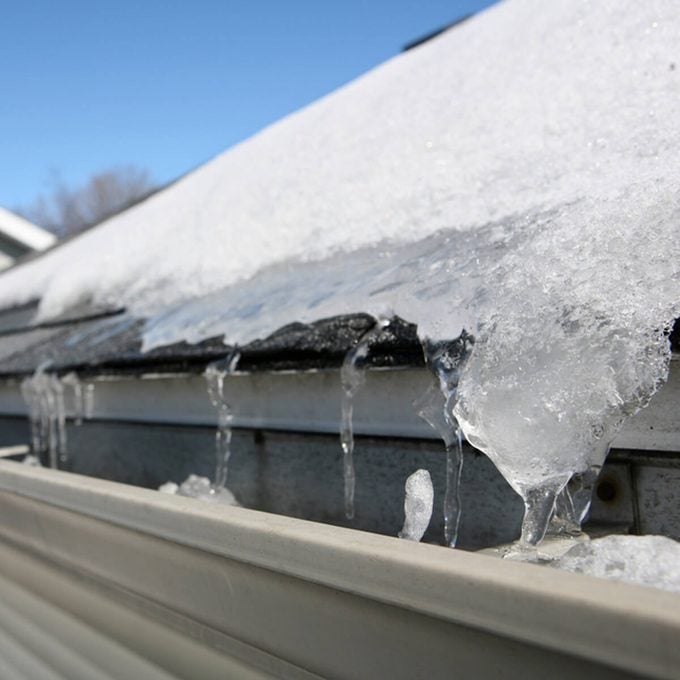The Pros and Cons of Roof Deicing Cables
Updated: Jan. 19, 2022
DIYers have devised ways to deal with ice dams more safely, including one of the most popular of these options: roof deicing cables.

Ice dams are created when melting snow on a roof doesn’t entirely flow off into the gutters. When the temperature drops, the resulting ice blockage creates a dam that will further slow additional melt, allowing it to get underneath the roof’s shingles and penetrate the protective top layer of your home. The old-school way to deal with ice dams was with a shovel and a lot of dangerous labor. Luckily, pros and DIYers have devised ways to deal with ice dams more safely, including one of the most popular of these options: roof deicing cables. Here are a few pros and cons to help you decide if this solution is right for you.
Here are 12 things many homeowners neglect every winter.
Function
Pro: When properly installed, roof deicing cables work very well, although they don’t often make the dramatic visual change most people expect. The cables don’t totally clear patches of snow, but rather melt the ice immediately around them, providing enough space for water to run off into your gutter. This is an important distinction: ice dams may still form but they won’t block the flow of additional snow melt, and that’s what protects your roof.
Con: They don’t affect the entire roof. Depending on the profile of your roof, you may have ice dams somewhere other than the eaves. If that’s the case, you’ll need to either run supplemental cables or find a way to address those problem areas at the source.
Cost
Con: Roof deicing cables run on electricity, which is an expensive way to generate heat. Some cabling systems are self-regulating, meaning that they generate more heat as the temperature drops, and cycle on and off as needed in order to minimize the hit to your budget. However, those systems are more expensive to purchase and install.
Pro: The flip side of the higher electrical bill is the potential savings when your roof isn’t penetrated by an ice dam. If you’re struggling with an ice dam situation, then investing in properly installed heating cables has the potential to pay huge dividends by protecting your roof… and the home beneath it!
Installation
Pro: Roof deicing cables come in a variety of forms, including a particularly user-friendly version commonly called ice tape. This self-adhesive coil makes it very easy to install, especially for a DIYer who has some comfort on a ladder.
Con: Like many products, deicing cables are only effective if installed properly. If you have some doubts about your ability to set up the cables correctly, you should consider finding a contractor. Of course, it’s equally true that the contractor themselves must be qualified. Always ask for references, and don’t assume that they can “figure it out.” Lastly, consider that the deicing cables need to be installed before the snow falls, so you’ll want to prep for winter before the weather turns.
Here’s an in-depth look at how to prevent ice dams with deicing cables
Usage
We’ll end with a quick bonus tip: one trait of roof deicing cables that sometimes draws criticism is that they are only functional in relatively “warm” cold-weather, usually down to about -9o F. But when you stop to think of it, this actually makes a lot of sense. Ice dams are caused by snow melting, which means that they only form once the temperature is right at the freezing mark. In other words, they’re not a problem when it’s especially cold, so you don’t need the cables to run in extreme temperatures.